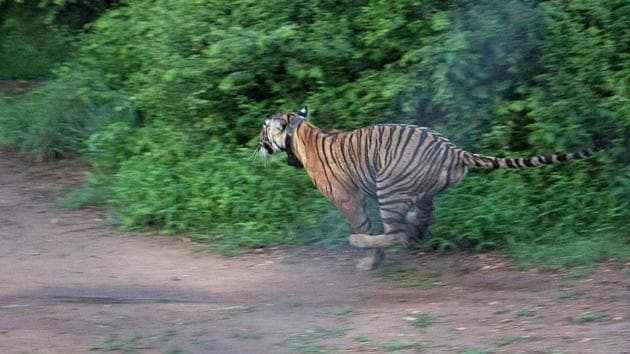Instead of fighting, wildlife authorities must focus on tracking Sariska’s missing tiger
It’s been six month since a tagged tiger vanished from the tiger reserve. Two agencies are fighting about who’s to blame
For the past six months, the disappearance of two tigers from Sariska tiger reserve in Rajasthan has led to a war of words between the Rajasthan Forest Department (FD) and the Wildlife Institute of India (WII). Both the agencies are responsible for the success of the tiger translocation aimed at repopulating Sariska with the animal.

Both institutes have locked horns over the vanishing of a tiger named ST5 for the last three months. The FD of Rajasthan puts the blame on the scientists at WII for not informing the department about the tiger’s disappearance in time for them to take the necessary action. The Wildlife Institute argues that a daily report on the tiger’s movement is sent to the DFO office everyday so there is no way the department could have been ignorant of the tiger’s status.
The devil lies, of course, in the detail of accusations flying back and forth. Since Feb 7, 2018, contact with a female tiger, ST5, brought in from Ranthambore to repopulate Sariska, was lost and no radio signals were received since then. On March 28, 2018, however, intermittent signals were received from her collar for a very brief time. On April 20, 2018, a panicked Forest Department sent out an SOS to Wildlife Institute of India urging them to clarify the situation on the ground.
In fact, the FD maintains that a series of letters and phone calls were made to WII between March and April to get clarity on the tiger’s situation. Was it dead or alive? Was there a signal from ST5 or not? The letter sent by Dr GS Bhardwaj, Field Director, Sariska, urges WII to explain the intermittent signals. One plausible explanation offered by the WII scientists was that the radio signals that were thought to be from ST5 were actually from another tiger, ST13. The letter further says, “due to this we have been delayed in registering FIR under Wildlife (Protection) Act, 1972, and proceeding with our investigation to conclude about the missing ST5 tigress”.
The Wildlife Institute, in the meantime, is preparing a detailed rebuttal to the Forest Department’s allegations, especially because the issue had now been raised in the media and has caused much embarrassment. Earlier this month, it released the document titled, Report to validate signal placed on ST5 female tiger in Sariska Tiger Reserve, to clarify that the institute was being unnecessarily blamed. The report states that “due diligence was observed by the WII teams in both Sariska and in Dehradun to address the issue”. The report clarifies that on closer examination it was found that the intermittent signals were in fact from ST5 and not ST13. In the same report, SP Goyal, the head of WII, absolves himself from any blame stating that law enforcement is the job of the Forest Department and not of a scientific institution.
The trail of letters highlights the ongoing acrimony between the two agencies; however, it doesn’t help fix any responsibility. Sadly, the incident has a precedent. Earlier this year, tiger ST11 was confirmed dead due to asphyxiation from a snare, prompting the Rajasthan government to set up an investigation. Their April report doesn’t mince words when it says, “if amends are not made then the debacle of losing all tigers of Sariska Tiger Reserve may well be repeated”.
The tiger reserve needs to fix management issues like acute shortage of staff. It needs to create an intelligence network to prevent poaching and rampant illegal grazing within the tiger reserve, and curtail the volume of pilgrim traffic that visits the temple within the park.
The death of an individual animal may not affect the survival of an entire species. But in a landscape that had lost all its tigers in 2005, every animal is precious. A sulking WII for its part has pulled now out of the Park, leaving a helpless forest department to monitor the 14 radio-collared tigers on their own.
Until the recommendations of the Standing Committee are implemented, any effort at rewilding Sariska is like putting sand through a sieve. The FD and WII need to sit together and sort out their differences at least for the sake of the tigers.
Bahar Dutt is an environment journalist currently working on a book, Restoring Nature, for Oxford University Press
The views expressed are personal






